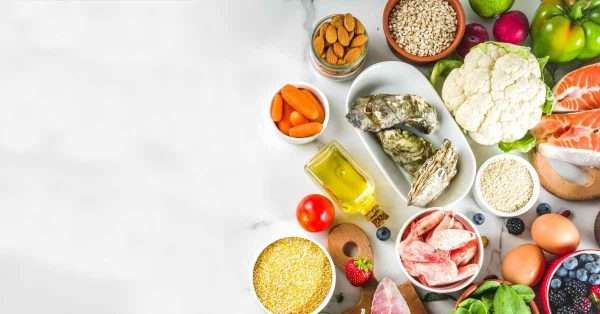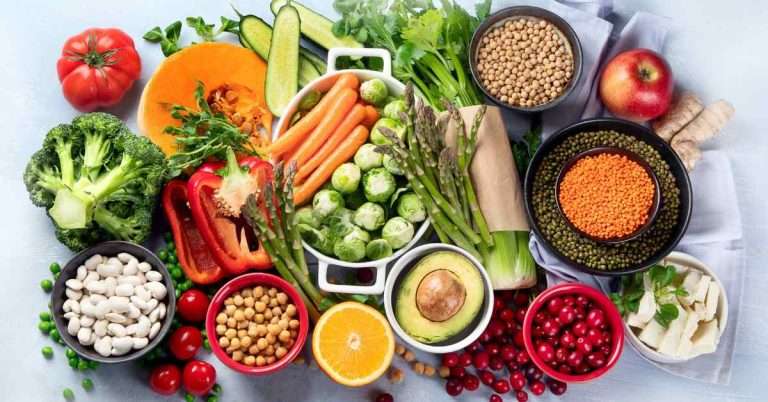Introduction
Inflammation is a natural response of our body’s immune system to shield us from harmful stimuli such as pathogens, irritants, or damaged cells. However, chronic inflammation leads to various health issues, including heart disease, diabetes, and arthritis1. One way to combat chronic inflammation is through the anti-inflammatory diet, a meal plan designed to reduce inflammation and promote overall health.
Understanding the Anti-Inflammatory Diet

The anti-inflammatory diet is not a traditional “diet” with strict rules or restrictions. Instead, it’s a way of eating that involves choosing foods known to reduce inflammation and avoiding foods that can trigger inflammation2. The anti-inflammatory diet is based on fruits, vegetables, lean proteins, healthy fats, and whole grains while limiting the intake of processed foods, red meats, and sugary drinks3.
Foods to Include in an Anti-Inflammatory Diet

Here are some foods that you should incorporate into your diet:
- Fruits and Vegetables: These are high in antioxidants and polyphenols, powerful anti-inflammatory compounds4. Examples include berries, cherries, oranges, kale, spinach, and broccoli.
- Whole Grains: Foods like brown rice, oatmeal, and whole grain bread are rich in fiber which can help reduce inflammation5.
- Lean Proteins: Fish, poultry, and plant-based proteins such as beans and lentils are excellent choices.
- Healthy Fats: Foods packed with omega-3 fatty acids like salmon, mackerel, chia seeds, flaxseeds, and walnuts can help reduce inflammation6.
- Spices and Herbs: Many spices and herbs like turmeric, ginger, and cinnamon have potent anti-inflammatory properties7.
- Green Leafy Vegetables: Spinach, kale, and collards are packed with antioxidants that combat inflammation.
- Nuts: Almonds and walnuts are rich in healthy fats that can help reduce inflammation.
- Fatty Fish: Salmon, mackerel, tuna, and sardines are high in omega-3 fatty acids, which are known for their anti-inflammatory effects.
- Fruits: Strawberries, blueberries, cherries, and oranges are high in antioxidants and polyphenols, which can fight inflammation.
- Olive Oil: Which is high in monounsaturated fats and antioxidants, making it a key component of an anti-inflammatory diet.
- Legumes: Dried beans and peas are high in fiber and antioxidants.
- Seeds: Chia seeds and flaxseeds offer anti-inflammatory omega-3 fatty acids.
- Tomatoes: They are high in lycopene, which helps reduce inflammation.
- Turmeric and Ginger: These spices have been shown to have anti-inflammatory properties.
Foods to Avoid in an Anti-Inflammatory Diet

Just as there are foods that can help reduce inflammation, there are also many foods that can trigger it. Here are some foods you should limit or avoid, along with healthier alternatives:
- Red Meat: Foods like steak and hamburgers can trigger inflammatory processes.
Alternative: Opt for lean proteins like chicken, turkey, or fish. Plant-based proteins like lentils, chickpeas, and tofu are also great alternatives. - Processed Meat: Bologna, bacon, sausage, and lunchmeat are high in unhealthy fats and can increase inflammation.
Alternative: Swap out processed meats for fresh, lean cuts of meat or poultry. Consider using grilled chicken or turkey instead of lunch meat for a sandwich. - Refined Carbohydrates: White bread, white rice, and pastries can cause inflammation. Alternative: Choose whole grain options instead of white bread or white rice. Whole grains like quinoa, brown rice, and whole-grain bread are more nutritious and less likely to cause inflammation.
- Fried Foods: Deep-fried Foods can trigger inflammation.
Alternative: Instead of deep-fried foods, try baking, grilling, or steaming. For example, baked sweet potato fries can be a delicious alternative to traditional fried potatoes. - Sugary Drinks / Snacks: Foods high in sugar, such as soda, can increase inflammation. Alternative: Swap out sugary drinks for water, herbal tea, or infused water. If you’re craving a sweet drink, try making a smoothie with fresh fruits and a handful of spinach or kale.
- Processed Snack Foods: Chips, crackers, and other processed snacks often contain unhealthy fats that can trigger inflammation.
Alternative: Try snacking on a handful of nuts or seeds. Fresh fruits and vegetables with hummus or guacamole can also satisfy your craving for a crunchy snack. - Excessive Alcohol: Moderate drinking can be healthy, but excessive drinking can lead to severe inflammation.
Alternative: If you’re trying to cut back on alcohol, swap out your usual drink for a mocktail. Many delicious non-alcoholic recipes can help you reduce your alcohol intake.
Sweeteners in the Anti-Inflammatory Diet
When it comes to sweeteners, it’s essential to choose wisely. While sugar can contribute to inflammation, not all alternatives are better. Natural sweeteners such as honey and maple syrup are better options than refined sugar but should still be used in moderation8. Artificial sweeteners like aspartame and sucralose may negatively affect the gut microbiota9. Stevia, a natural zero-calorie sweetener, can be a good alternative for those looking to reduce their sugar intake without using artificial sweeteners10.
The following sweeteners can be part of an anti-inflammatory diet:
- Raw Honey: Raw honey is a natural sweetener packed with enzymes, antioxidants, iron, zinc, and potassium. It’s sweeter than sugar, so that you can use less of it11.
- Stevia: Stevia is a low-calorie sweetener extracted from the leaves of the Stevia rebaudiana plant. It’s much sweeter than sugar, so a little goes a long way11.
- Dates: Dates are a natural source of sweetness and can be excellent in baking or smoothies. They’re also high in fiber, which can help regulate blood sugar levels11.
- Coconut Sugar: Coconut sugar is natural from coconut palm sap. It has a lower glycemic index than traditional cane sugar, meaning it doesn’t spike your blood sugar levels as much.
- Maple Syrup: Maple syrup is another great natural sweetener that contains antioxidants. Like honey, it’s sweeter than sugar so you can use less of it11.
- Blackstrap Molasses: Although blackstrap molasses comes from cane sugar, it is much more nutrient-dense than cane syrup or regular molasses. Blackstrap molasses provides iron, calcium, potassium, magnesium, vitamin B6, and selenium.
- Fresh and Frozen Fruit: Fresh or frozen fruit is the number one way to sweeten food and drinks. Unlike packaged and baked sweets, fruits have many nutritional benefits like fiber, vitamin C, potassium, and natural sugar.
Anti-Inflammatory Diet Recipes To Try!
- 20 Anti-Inflammatory Recipes – Allrecipes
- 25+ Easy Anti-Inflammatory Recipes – EatingWell
- 25+ Of Our Best Anti-Inflammatory Recipes – EatingWell
- 24 Easy Anti-Inflammatory Recipes – Delish
- Anti-inflammatory diet meal plan: 26 healthful recipes – Medical News Today
Conclusion
An anti-inflammatory diet can be an excellent tool for managing inflammation and promoting overall health. By focusing on whole foods and limiting the intake of processed items, you can help your body fight inflammation naturally. Remember, it’s not just about eliminating certain foods from your diet but also about incorporating nutritious ones to boost your health. Always consult with a healthcare professional before making significant changes to your diet.
More Stories
Find more amazing stories on the blog!
References
- Chronic inflammation: Causes and treatment
- Anti-Inflammatory Diet: How to Fight Inflammation with Diet and Lifestyle Changes
- Dietary patterns and inflammation: Compound interest in nutrition
- Antioxidants and polyphenols: Concentrations and relation to dietary intake and plasma levels
- Whole grains, dietary fiber, and chronic disease
- Omega-3 fatty acids and inflammatory processes
- Spices and Herbs: Natural Sources of Antioxidants – A Mini Review
- Natural sweeteners: Health benefits and risks
- Artificial sweeteners: A systematic review of metabolic effects in youth
- Stevia: A natural sweetener with potential medicinal uses
- https://www.health.harvard.edu/staying-healthy/quick-start-guide-to-an-antiinflammation-diet




